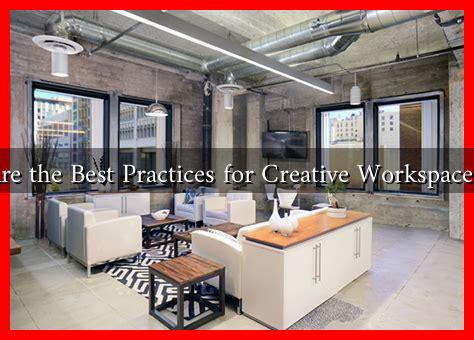-
Table of Contents
What Are the Best Practices for Creative Workspace Design
In today’s fast-paced and ever-evolving work environment, the design of a workspace plays a crucial role in fostering creativity, collaboration, and productivity. A well-thought-out workspace can significantly impact employee satisfaction and overall organizational success. This article explores the best practices for creative workspace design, providing insights and examples to help organizations create an inspiring environment.
Understanding the Importance of Workspace Design
Workspace design goes beyond aesthetics; it encompasses functionality, comfort, and the psychological impact of the environment on employees. According to a study by the International Facility Management Association (IFMA), well-designed workspaces can increase productivity by up to 20%. Furthermore, a survey by Steelcase found that 89% of employees believe that their workspace affects their overall job satisfaction.
Key Elements of Creative Workspace Design
To create an effective creative workspace, several key elements should be considered:
- Flexibility: Workspaces should be adaptable to various tasks and team sizes. Incorporating movable furniture and modular spaces allows for quick reconfiguration.
- Natural Light: Access to natural light has been shown to improve mood and energy levels. Large windows and open layouts can enhance the flow of daylight.
- Color Psychology: Colors can influence emotions and productivity. For instance, blue is often associated with calmness and focus, while yellow can stimulate creativity.
- Biophilic Design: Integrating natural elements, such as plants and water features, can reduce stress and enhance well-being. A study published in the Journal of Environmental Psychology found that exposure to nature can improve cognitive function.
- Collaboration Zones: Designated areas for teamwork and brainstorming can encourage collaboration. These spaces should be equipped with whiteboards, comfortable seating, and technology for presentations.
Case Studies: Successful Creative Workspaces
Several companies have successfully implemented innovative workspace designs that promote creativity and collaboration:
- Google: Known for its unconventional office spaces, Google incorporates open areas, recreational facilities, and themed meeting rooms. Their offices are designed to encourage spontaneous interactions among employees.
- Airbnb: The Airbnb headquarters features a design inspired by the concept of “belonging.” The open layout, communal spaces, and art installations reflect the company’s mission and foster a sense of community.
- WeWork: As a co-working space provider, WeWork emphasizes flexibility and collaboration. Their locations are designed with shared amenities, private offices, and event spaces to cater to diverse work styles.
Incorporating Technology in Workspace Design
Technology plays a vital role in modern workspace design. Integrating smart technology can enhance the functionality of a workspace:
- Smart Lighting: Automated lighting systems can adjust based on natural light levels, improving energy efficiency and employee comfort.
- Collaboration Tools: Digital whiteboards and video conferencing tools facilitate remote collaboration, making it easier for teams to connect regardless of location.
- Mobile Apps: Apps that allow employees to book meeting rooms or find quiet spaces can streamline the use of shared resources.
Creating a Culture of Feedback
To ensure that the workspace design meets the needs of employees, organizations should foster a culture of feedback. Regular surveys and focus groups can provide valuable insights into how employees interact with their environment. This feedback can guide future design decisions and improvements.
Conclusion
In conclusion, creative workspace design is essential for fostering an environment that promotes productivity, collaboration, and employee satisfaction. By incorporating flexibility, natural light, color psychology, biophilic elements, and technology, organizations can create spaces that inspire creativity. Learning from successful case studies and maintaining an open dialogue with employees will further enhance the effectiveness of workspace design. As the workplace continues to evolve, prioritizing thoughtful design will be key to attracting and retaining top talent.
For more insights on workspace design, consider exploring resources from Steelcase and IFMA.

